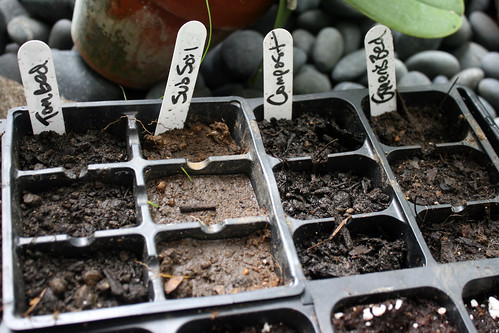 In addition to my fall planting, I also set up a test of my garden soils to try to figure out if a problem in the soil caused my curled-up tomato plants. I'd like to know for next year. I have lots of Siberian Red tomato seeds, so I planted these in four soil samples:
In addition to my fall planting, I also set up a test of my garden soils to try to figure out if a problem in the soil caused my curled-up tomato plants. I'd like to know for next year. I have lots of Siberian Red tomato seeds, so I planted these in four soil samples:
1. Tomato bed (this produced plants with curled leaved)
2. Sub-soil (lawn)
3. Purchased compost (same compost that went into the tomato bed)
4. Green's bed (loam and compost from sources different than tomato bed)
I suspect the problem is with the purchased loam that went into the tomato bed. I bet it was treated with an herbicide (2,4-D or glyosphosphate) at some point. Sad that this is so prevalent. Lots of plants can't handle these chemicals and they get spread around all over. 2,4-D degrades rapidly in soils (half life = 6.2 days), so if this is the problem it should dissipate soon.
Fortunately, USDA tests of food crops grown in 2,4-D treated soils risks found that levels are not of concern. OK, but the tomatoes don't grow very well. The 2,4-D dietary risk assessment considered both acute and chronic risks from residues in food based on field trials --- so ... we can eat the produce.
3 comments:
When do we find out?
I am starting with seed because there are no seedlings in stores now. I assume if the soil is bad it will affect seedlings right away maybe even affect germination. Not sure what I will find if anything.
Tomato seedlings should take about 7 days to germinate in this summer warmth, so anytime after that might give us an answer.
Post a Comment